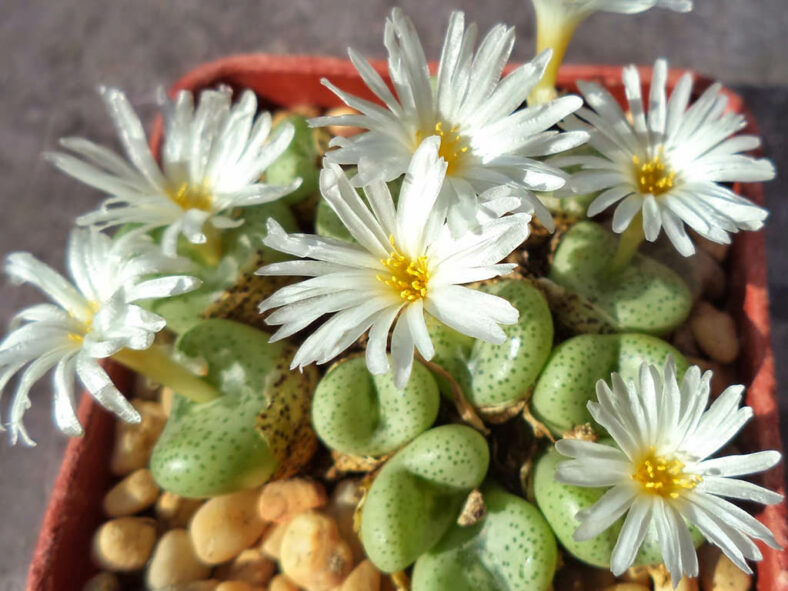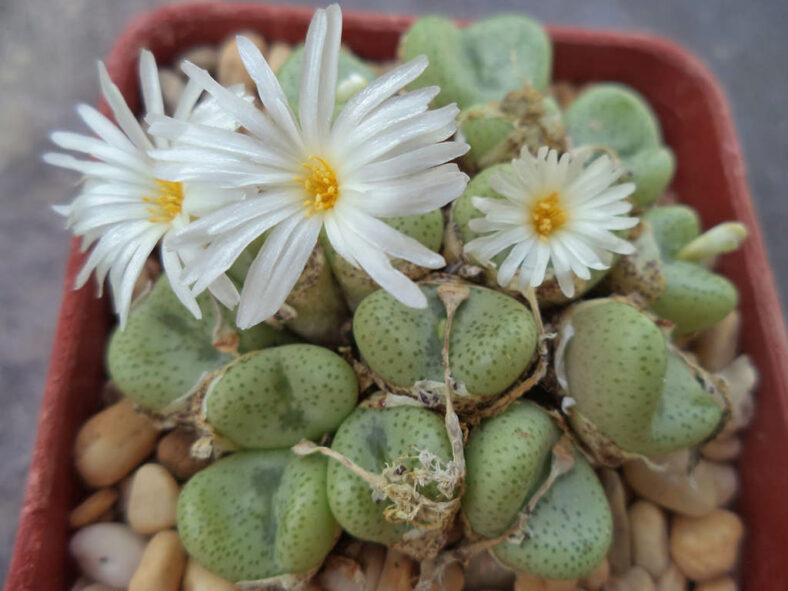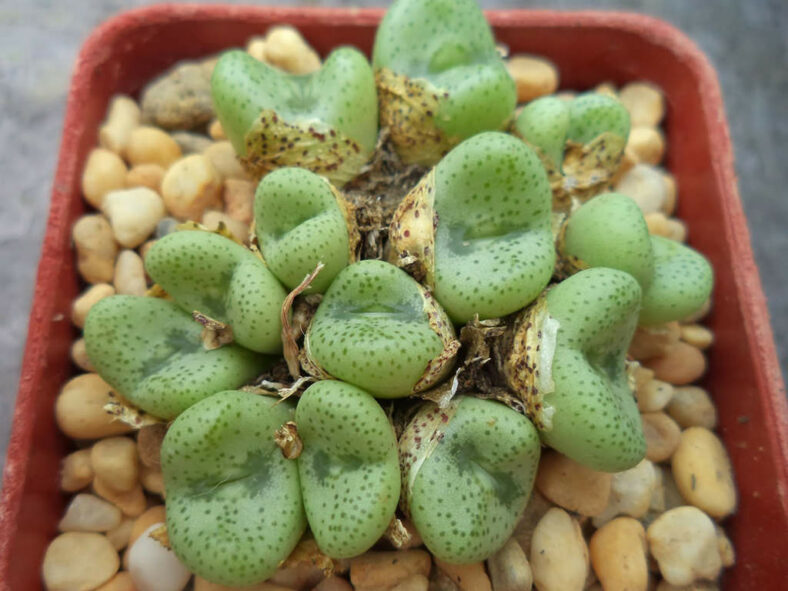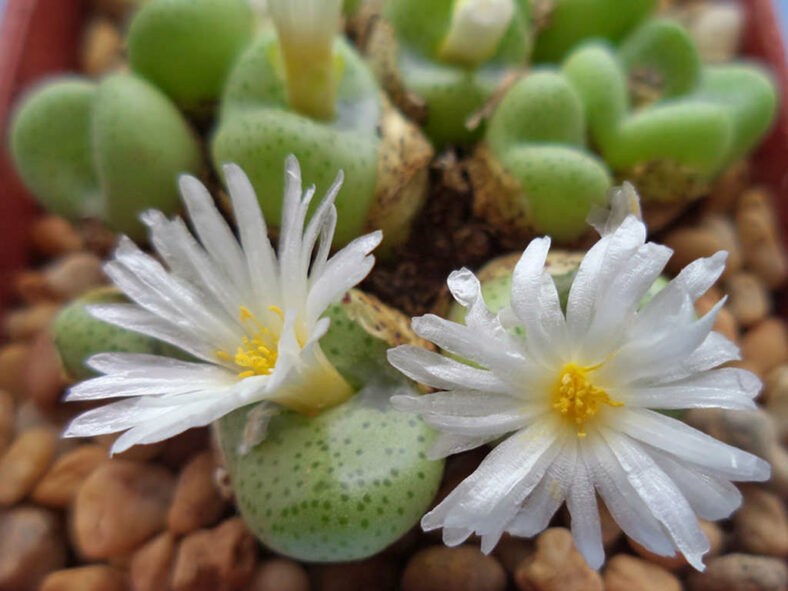Conophytum schlechteri is a cute succulent plant from South Africa, ideal for growers with limited growing space.
Scientific Name
Conophytum schlechteri Schwantes
Scientific Classification
Family: Aizoaceae
Subfamily: Ruschioideae
Tribe: Ruschieae
Genus: Conophytum
Etymology
The specific epithet "schlechteri (pronounced SCHLEK-ter-eye)" honors the German taxonomist, botanist, and orchidologist Friedrich Richard Rudolf Schlechter (1872-1925) or his brother Max Schlechter (1874-1960) or both.
Origin
Conophytum schlechteri is native to South Africa. It grows in silt-filled troughs in quartz ridges at Farquharson se Kop mountain in the Northern Cape province.
Description
Conophytum schlechteri is a dwarf succulent that grows in a cluster of fused leaf pairs, forming inverted cone-shaped bodies. It produces offsets, forming a clump up to 4 inches (10 cm) in diameter with age. The bodies are smooth, soft, and pale green, spotted or not, and often with a red tint. At the top, they are irregularly concave and can grow up to 1 inch (2.5 cm) tall and 0.8 inches (2 cm) in diameter.
During the winter, Conophytum schlechteri produces short-tubed flowers with narrow, white to pink petals and a central tuft of yellow stamens. They emerge from the central fissure, open during the day, and close at night.

How to Grow and Care for Conophytum schlechteri
Light: This plant requires bright light but not too much direct sun. To prevent sunburn, find a spot where it can receive a few hours of full sun in cooler periods of the day.
Soil: Conophytum schlechteri needs porous soil that allows water to drain away quickly for optimum plant growth. You can use a commercial potting mix for succulents or make your own.
Temperature: High temperatures are not a problem, but the plant is not frost-hardy. It grows best in USDA Plant Hardiness Zones 10b to 11b, with average minimum winter temperatures ranging from 35 to 50 °F (1.7 to 10 °C).
Watering: Conophytum schlechteri requires little or no water when it goes dormant in the spring. When it begins to grow again in the fall, it is safe to water deeply but allow the soil to dry before between waterings. If leaves start to wrinkle during active growth, your plant needs water.
Fertilizing: This plant is a light feeder and does not need fertilizer if repotted every two years.
Repotting: It is best to repot it at the beginning of the growing season, but it can be done almost any time when the plant is actively growing.
Propagation: Conophytum schlechteri is usually started from seeds. It can also be easily propagated by division. The best time to divide the plant is in late summer or early fall before it begins to break dormancy or after it has flowered.
Learn more at How to Grow and Care for Conophytum.
Toxicity of Conophytum schlechteri
Conophytum schlechteri is considered non-toxic, making it safe to have around children and pets.
Links
- Back to genus Conophytum
- Succupedia: Browse succulents by Scientific Name, Common Name, Genus, Family, USDA Hardiness Zone, Origin, or cacti by Genus
Photo Gallery
Click on a photo to see a larger version.


